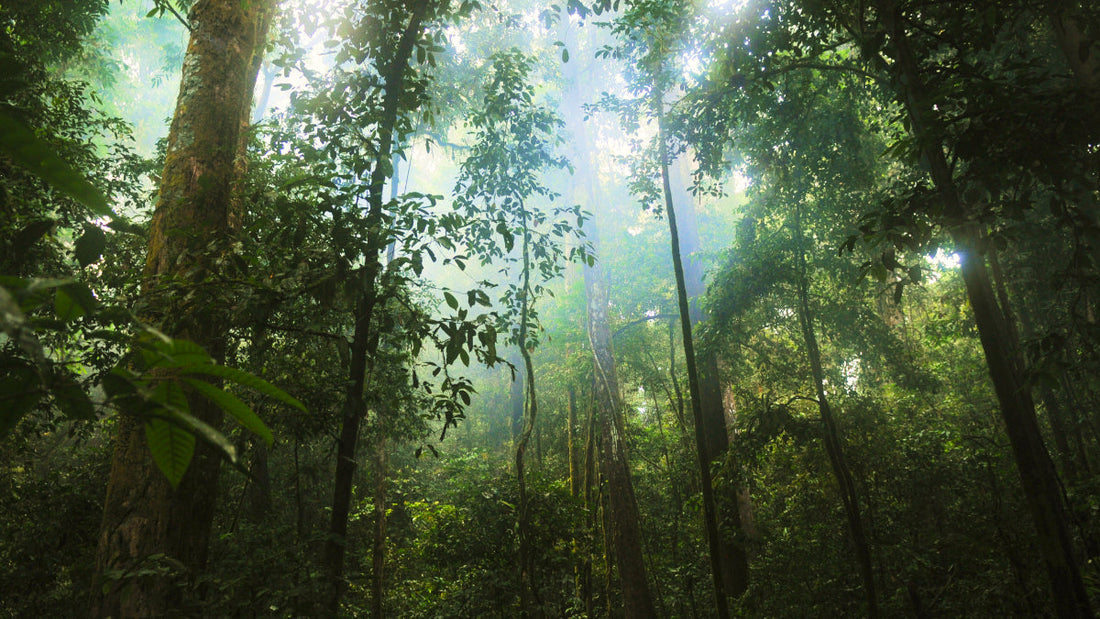
Hemp — Can Help End Deforestation”
Share
🌿How Sustainable Style Can Help Stop Deforestation
Every outfit tells a story — but what if the clothes we wear could tell a story of healing, not harm?
Across the globe, forests are vanishing at an alarming rate. Millions of trees are cleared every year for agriculture, grazing, and even to produce materials used in the fashion industry. But as consumers become more conscious of their impact, a greener movement is growing — and it’s transforming how we dress, one fabric at a time.
🌍 The Hidden Link Between Fashion and Deforestation
It might surprise you to learn that fashion is closely tied to deforestation. Fabrics like viscose, rayon, and conventional leather are often produced from trees harvested unsustainably or from land cleared for livestock.
Around 70 million trees are cut down each year to create clothing materials like rayon and modal. Many of these trees come from ancient and endangered forests — ecosystems that store carbon, regulate rainfall, and support Indigenous communities and wildlife.
So when we talk about fast fashion, we’re not just talking about overflowing closets — we’re talking about vanishing forests.
🌱 A Greener Wardrobe: Fashion That Gives Back
Thankfully, the fashion industry is evolving. Conscious designers, sustainable brands, and new-age consumers are proving that fashion can look good and do good.
Here’s how sustainable fashion — especially hemp and other plant-based textiles — is helping heal our planet:
🌿 Hemp: Nature’s Powerhouse Fabric
Hemp grows quickly, enriches the soil, and needs minimal water or pesticides. It can be cultivated without deforestation and represents the heart of regenerative fashion.
🌾 Tree-Free Textiles & Eco-Fabrics
Fabrics like Tencel (lyocell), organic cotton, bamboo, and recycled fibers are eco-friendly alternatives to tree-derived viscose. These are often made in closed-loop systems that minimize waste and water use.
🍄 Plant-Based Leather Innovations
Forward-thinking brands are crafting leathers from pineapple leaves, mushrooms, cactus, and even apple skins — cruelty-free and forest-friendly.
🔍 Transparency & Traceability
Ethical labels are mapping their entire supply chains to ensure materials don’t come from endangered forests and that fair labor practices are followed.
♻️ Circular Fashion
The future is circular — where clothing is recycled, upcycled, or rented instead of discarded. This keeps garments out of landfills and reduces the need for virgin resources.
🌼 How You Can Be Part of the Change
You don’t have to be a designer to make a difference. Every purchase and every choice matters.
-
Buy Less, Choose Better: Invest in timeless, durable pieces.
-
Support Sustainable Fabrics: Choose hemp, linen, organic cotton, and Tencel.
-
Look for Certifications: Labels like FSC (Forest Stewardship Council) and CanopyStyle protect forests.
-
Rewear & Repair: Give your clothes a longer life.
-
Spread the Word: Educate others — awareness is the seed of change.
💚 The Future of Fashion Is Regenerative
At Hemp Horizon, we believe the future of fashion isn’t just sustainable — it’s regenerative. It gives back more than it takes, restoring balance to the Earth while celebrating creativity and individuality.
By embracing hemp and eco-conscious materials, we’re not only changing our wardrobes — we’re protecting forests, biodiversity, and our climate.
Let’s make fashion a force for good.
Let’s wear our values proudly — for the planet, for the people, and for the forests that sustain us all. 🌎✨

